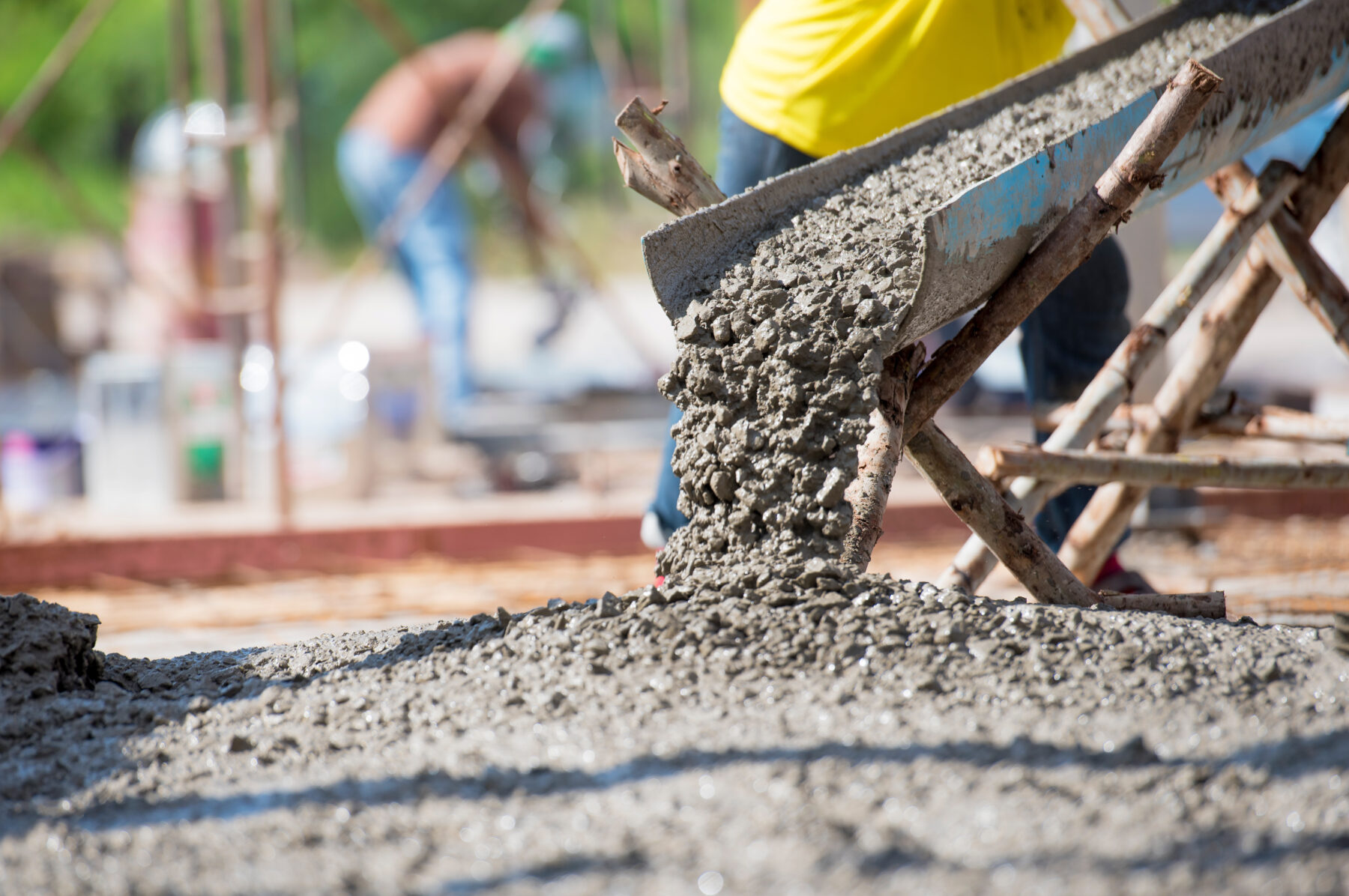A Guide to How Concrete is Made
April 29, 2024

Imagine a material so integral to our lives, we barely stop to consider its origins. Concrete is a fundamental component in urban architecture, offering durability to city infrastructures. The production of concrete, a transformation of ordinary ingredients into a crucial material, is intriguing and complex. Utilizing water, cement, and aggregate – an assortment of rocks, sand, and gravel – this common yet essential material comes to life. Insight into the seemingly ordinary yet surprisingly intricate process of concrete production is in order.
The Basic Ingredients of Concrete
Concrete is made through the careful mixture of four main components: water, a combination of sand and gravel often referred to as aggregate, cement, and certain additives. Once mixed, they form a highly durable, frequently utilized composite material that is a cornerstone in building and construction activities.
A key contributor to the process of concrete formation is water. It begins a crucial chemical response named hydration when combined with cement. It’s important because it’s hydration that transforms the slurry-like concoction of concrete into a hardened product.
The variation to the look of concrete lies in the aggregate used, which molds its distinct texture and look. Sand and gravel are integral parts, making up around 60%-75% of concrete, providing its renowned solid structure.
Cement, when combined with water, transforms into an adhesive. This adhesive unifies all other elements, producing a solid, enduring substance.
Capping it all off are the additives. Considering the desired use of concrete, specific chemicals or ingredients are mixed in to adjust its characteristics. These additives can regulate setting time, boost workability, improve longevity, or change additional unique attributes.
Combined in just the right proportion through a process known as batching, these four ingredients result in the product known so well today.
Step-by-Step Process
The progressive stage of concrete production starts with its basic raw materials and ends with the material that’s a foundation of construction.
Mixing Water and Cement
In the process of making concrete, the interaction between water and cement starts things off. Hydration is a chemical process triggered when water mixes with cement. This reaction creates heat and produces a paste-like substance. Getting the right mix of water and cement is crucial. It affects how easy the concrete is to work with and how strong it becomes once it’s set.
Making concrete isn’t just about mixing cement, aggregate, and water. Carefully measure these ingredients to make a concrete that works well for the specific construction project.
Adding Aggregate
Sand and gravel are the ingredients that provide volume in the concrete mix. Following the correct combination of cement and water, these aggregates are combined for additional strength and volume, enhancing concrete’s versatility.
Sand and gravel add significant benefits to the final concrete product. They enhance the mix’s volume without changing the water-cement ratio and bolster concrete’s strength and durability.
Aggregates are essential in making a good concrete mix. The sand fills in tiny spaces, while bigger pieces like gravel or crushed stone fill in larger gaps. This perfect combo makes concrete strong and long-lasting.
Incorporating Additives and Admixtures
When talking about concrete, additives come into play. These are things like accelerators, retarders and air-entraining agents that alter how the concrete works and makes it better.
Accelerators quicken the hardening process of concrete. On the other hand, retarders slow the process down, especially needed for larger pours to avoid fast drying. The inclusion of air-entraining agents makes fine air bubbles in the concrete, enhancing its strength through freeze-thaw cycles. Every additive provides unique advantages, shaping the qualities of the concrete to meet requirements.
Then there’s the retarders. These act like brakes on the setting process of concrete, effectively slowing it down. This proves particularly useful in hot weather conditions, where concrete can otherwise harden too quickly to be workable.
Air-entraining agents are important for boosting concrete’s strength and resistance to freeze-thaw cycles. They work by producing minute, stable air pockets in the concrete, which makes the mixture more flexible and workable, offering a stronger, flawless construct overall.
Mixing Techniques
When discussing mixing techniques in the production of concrete, two methods often come up: hand mixing and machine mixing. Each has its advantages and disadvantages, and the right choice largely depends upon the scale and precision requirements of your project.
Hand mixing is a manual process of combining concrete ingredients. It’s usually done with simple tools, making it suitable for smaller tasks. However, since it requires more time and effort, it may not be the best option for big projects or ones with short timelines.
Meanwhile, machine mixing uses technology to combine the ingredients. Mixers perform this task, giving more accurate and efficient results, especially for large quantities of concrete. However, this precision often comes with higher costs, including equipment investment and the need for trained workers.
When deciding between these two methods, think about the project size, the precision needed in the mix, the available workforce, and the budget. For a large construction task requiring lots of concrete, machine mixing is often necessary. However, for a smaller, do-it-yourself project with flexible timeframes, hand mixing might work just fine.
Curing Concrete
Curing is an essential step in concrete production. It influences the final strength and durability of the concrete. This process begins after the mixing and shaping of the concrete, significantly impacting the eventual robustness, longevity, and quality of the concrete.
Essentially, curing is all about providing just the right conditions for concrete to maximize its strength. This means finding the perfect balance of temperature and humidity and keeping the concrete damp throughout the process. This dampness is crucial for a chemical reaction called hydration – the process that hardens cement. If the concrete dries too quickly, it prevents this reaction and can result in a weaker product.
There are various ways to cure concrete. For instance, using items like wet burlap or plastic covering is one traditional method. This approach helps to keep an ideal level of dampness in the concrete. Another technique involves misting the concrete with specially created compounds, which aids in speeding up the curing process.
When you need stronger results, you can speed up the curing process by warming the fresh concrete with steam. It’s a quick and effective way to build strength faster.
Interestingly, concrete can also be set and hardened underwater. This method is especially useful for projects such as bridge foundations that require parts of the concrete to be submerged.
Lastly, using eco-friendly curing methods in green building makes a concrete structure both strong and sustainable. This way, it also reduces environmental harm.
Quality Control and Testing
In the process of creating concrete, it’s important to have the right checks in place. These checks, or tests, will make sure the concrete fits the bill in terms of quality, and is exactly what was expected.
Doing a slump test involves using a cone, filling it with the concrete blend, and raising it. This causes the concrete to “slump” or settle down. By comparing the original and reduced height of the cone, we measure this slump. The results give a clear understanding of how workable and consistent the concrete mixture is, showing why this test is crucial.
Checking the amount of pressure your concrete mix can withstand, known as the compression test, is a vital quality check. This checks to see if your mix meets necessary strength levels and predicts how the concrete will perform once it forms part of a building structure.
In addition to the methods mentioned, the flow table test is another quality assurance procedure to be used. This test examines the workability of the mix, particularly for high-flow types of concrete. It measures how the concrete reacts to minor vibrations after molding. This data allows us to understand the flow and stability of the mix, which is very helpful when handling advanced, self-leveling types of concrete.
Making concrete demands a lot of accuracy, from combining basic elements like water, cement, and aggregate, to thoroughly managing its texture and shape through tests. Getting these factors right allows us to create a strong and flexible material. The way concrete is made keeps improving, with new methods such as high-flow concrete and superplasticizers expanding possibilities. These progressions show just how vital and adaptable concrete is in building the future.

